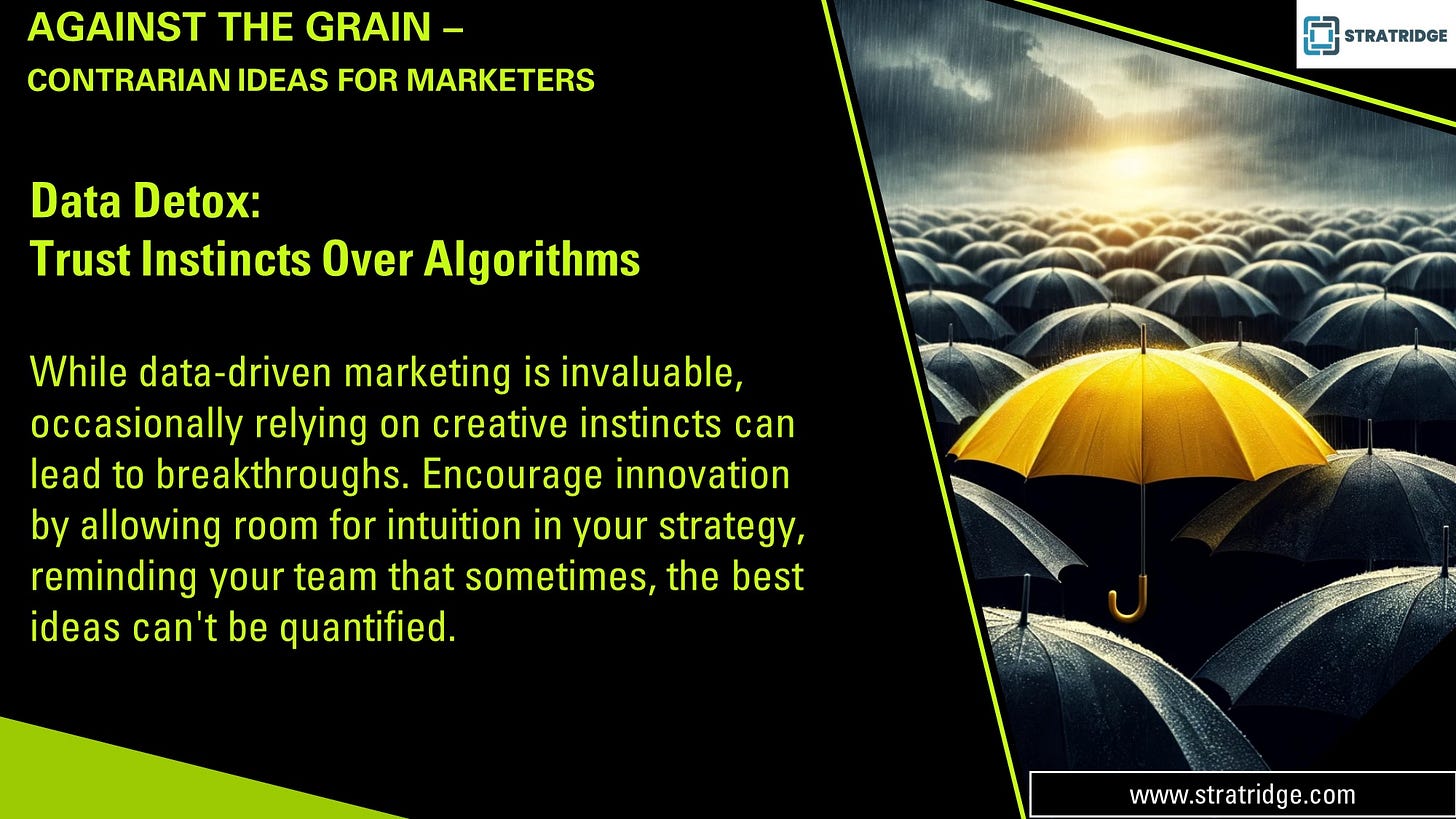Data Detox: The Crucial Balance Between Analytics and Intuition in Marketing
In today's hyper-connected world, data-driven strategies govern the realm of marketing. Analytics provide a roadmap for understanding consumer behavior, optimizing campaigns, and maximizing return on investment. Yet, there remains an undeniable value in the human element—creative instincts that capture the essence of innovation. The concept of "Data Detox" suggests that while data is indispensable, there is also a critical need to trust our instincts over algorithms occasionally. Here's how blending data-driven approaches with human creativity can revolutionize marketing strategies, fostering a culture of innovation and intuition that sometimes outperforms the most sophisticated algorithms.
The Limitations of a Purely Data-Driven Approach
Data-driven marketing is undeniably powerful. It enables marketers to target audiences with precision, predict trends, and measure the effectiveness of campaigns in real time. However, data alone can sometimes lead to a tunnel-vision approach. Algorithms can predict customer behavior based on past patterns but are not infallible. They cannot often process abstract human experiences or predict shifts in cultural paradigms. For instance, data might have never predicted the rapid rise of social media platforms like TikTok, which initially catered to a niche demographic before becoming a global phenomenon. Herein lies the limitation of relying solely on data: it can only inform us about the past and the present, not innovate for the future.
The Power of Creative Instincts
Human creativity and intuition fill the gaps left by data. Instincts are crucial in decision-making, particularly when data is inconclusive or absent. Creative instincts come from a deep understanding of human emotions, cultural nuances, and unarticulated desires—areas where traditional data might not reach. Steve Jobs famously eschewed market research for some of Apple's most innovative products, relying instead on intuition and a profound understanding of human-centric design. This approach led to groundbreaking devices that reshaped entire industries. Such examples underscore the potential of intuition to lead to breakthroughs that a purely data-driven approach might miss.
Integrating Data and Instincts
The most successful marketing strategies find a balance between data and creative intuition. Data should inform decisions, not dictate them. To harness the strengths of both approaches, companies can adopt the following strategies:
Empowering Creativity in Data Teams: Encourage teams to think beyond numbers and engage with their findings' broader cultural and psychological implications. This could involve integrating roles that bridge data science with creative departments—such as behavioral scientists and cultural analysts.
Scenario Planning and Simulations: Use data to simulate different future scenarios based on varying assumptions. This helps explore potential future trends that data cannot predict directly, allowing creative teams to brainstorm innovative solutions to hypothetical challenges.
Cultivating a Culture of Innovation: Foster an organizational culture that values risk-taking and views failures as learning opportunities. Promoting internal hackathons or innovation labs where data scientists and creative teams collaborate can lead to unexpected ideas and solutions.
Using Data to Test, Not Just Validate: Instead of using data merely to validate ideas, use it to test bold, intuitive leaps. Netflix's decision to invest in original content was initially a risk based on its subscribers' viewing habits. Data helped refine their approach, but the initial idea was a creative gamble that paid off spectacularly.
Feedback Loops: Establish robust feedback mechanisms to understand the impact of intuition-driven decisions. This can help refine the balance between data-driven strategies and creative decision-making.
The Ethical Consideration
Balancing data and intuition also involves navigating the ethical implications of data usage. Relying too heavily on data can lead to privacy concerns and the potential for bias in algorithmic decision-making. Introducing human judgment can mitigate some of these risks, ensuring that marketing practices remain ethical and consumer-centric.
The call for a Data Detox in marketing is not about undermining the value of data. Instead, it's about reasserting the irreplaceable value of human creativity and intuition. In the age of information overload, trusting our creative instincts can be as revolutionary as the latest data analytics tools. By fostering an environment where data and intuition coexist harmoniously, marketers can predict the future and invent it. This balanced approach promises to enhance the effectiveness of marketing strategies and ensure they are more humane, innovative, and culturally resonant.


